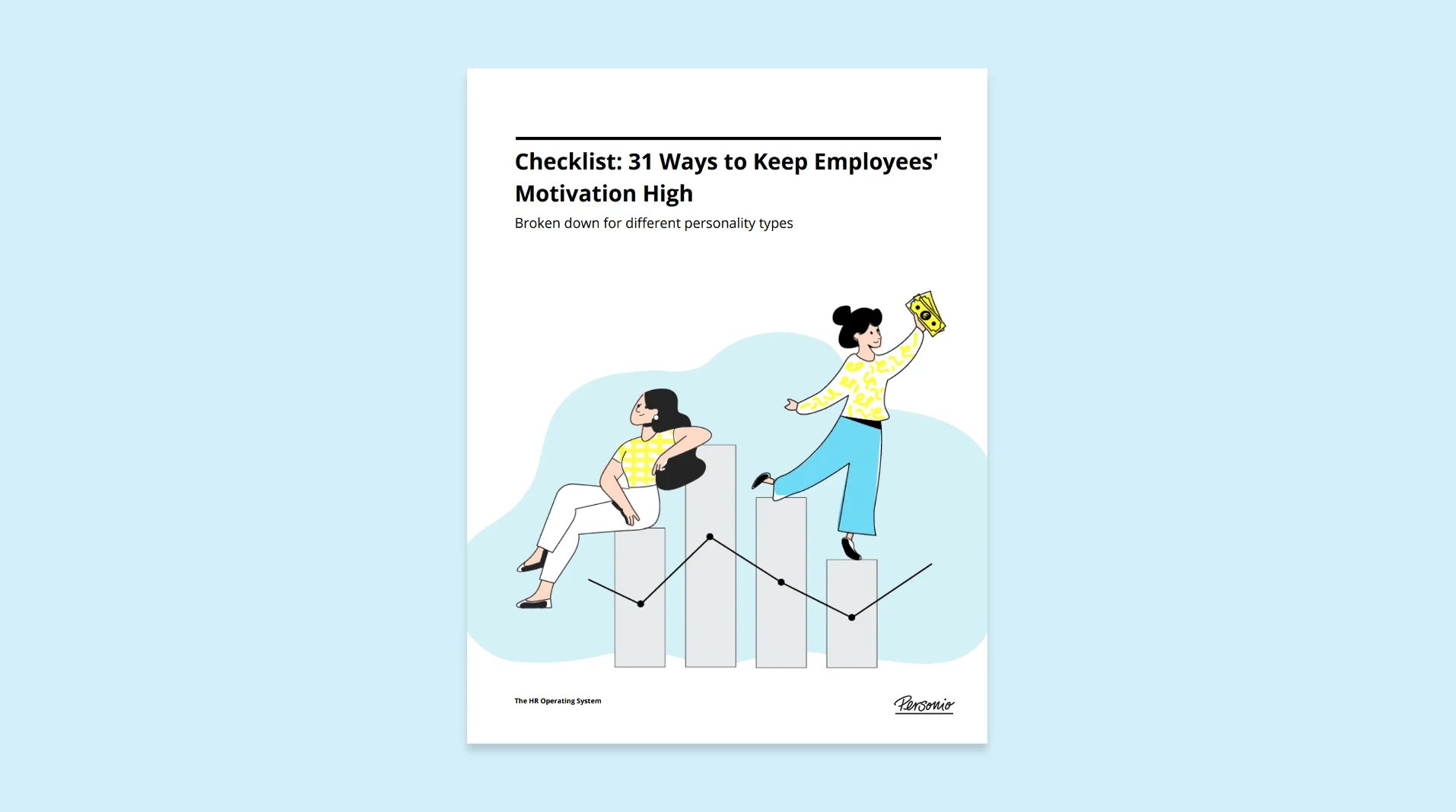Understanding the Process of Job Crafting

The concept of job crafting is designed to let employees explore and experience greater purpose and meaning in their work. How does it work and how might it look in practice? In this article, we dive deep into how you can meaningfully introduce job crafting into your organisation.
Key Facts
Job crafting tailors roles and responsibilities to more closely reflect an employee’s professional goals, work habits and skills.
There are several types of job crafting, each designed to customise a certain portion of an employee’s professional sphere to their needs.
When implemented correctly, job crafting results in higher levels of engagement, productivity and employee satisfaction.
Contents
- 1What Is Job Crafting?
- 2Origins of Job Crafting
- 3Four Key Types of Job Crafting
- 4What Are the Benefits of Job Crafting?
- 5How To Implement Job Crafting Strategies
- 6Job Crafting Examples
- 7Key Considerations for Successful Job Crafting
- 8Embrace Job Crafting for a Thriving Workforce
- 9Frequently Asked Questions About Job Crafting
What Is Job Crafting?
Job crafting refers to the process of proactively customising and improving the role of an employee. This is typically done apart from or only in light coordination with a line manager.
Origins of Job Crafting
Job crafting was first formally observed in the late 1980s, but the term itself was coined in 2001 by the psychologists Amy Wrzesniewski and Jane E. Dutton.
The concept stands apart from typical top-down organisational thinking in that it allows employees to make decisions about their workflow and processes that best play to their strengths and preferences.
Numerous studies, including one in the Journal of Vocational Behavior in 2018 and one in the Journal of Occupational and Organizational Psychology in 2015, found that job crafting can be beneficial for employees and their well-being.
Four Key Types of Job Crafting
There’s no right or wrong way for employees to use job crafting, because they can adapt it to fit their work needs. Whether they want to improve their relationships with colleagues or establish more concrete career goals, there’s a type of job crafting for them.
Below, we’ve provided a non-exhaustive list of several job crafting types that employees can leverage in organisations.
1. Task Crafting
This is the most common type of job crafting related to changes made to the responsibilities of a role without neglecting overall job duties. Task crafting allows employees to make small changes to how they perform their tasks. This may for example involve a more flexible allocation of time for each employee task..
2. Relationship Crafting
As the name suggests, relationship crafting is when employees focus on improving interactions with colleagues. Generally, the motivation for this type of job crafting is to build a robust support network for productive collaborative work. This may involve a team lunch or co-workers going out to coffee.
3. Cognitive Crafting
Cognitive crafting is a form of job crafting where employees focus on shifting their mindsets in an effort to feel more connected to their work. It helps employees adopt more positive thinking regarding their roles, in turn strengthening their connection to the tasks at hand. Helping workers recognise the importance of their position helps them feel more engaged with their tasks and produce better results. It can help them strengthen their purpose as well, which is why cognitive crafting is also sometimes called ‘purpose crafting’.
4. Well-Being Crafting
Well-being crafting helps an employee shift focus to their mental health. This type of job crafting involves improving work-life balance by taking control over the amount of work done and setting time boundaries. This helps prevent burnout, which can interrupt productivity in more extreme ways over time. This type of job crafting may involve prioritising time for hobbies or taking time for their social life.
What Are the Benefits of Job Crafting?
Letting employees job craft — and helping them do so — can markedly improve their performance and their overall satisfaction. This is a net gain for your company as a whole.
Some benefits of job crafting include:
Mitigating Workplace Stress | Taking greater control over their jobs helps employees adjust their responsibilities to get the most done with the least stress. Less stress means happier employees, which in turn impacts employee retention at your company. |
Helping Establish Career Goals | Certain types of job crafting can help employees define what they hope to accomplish within their roles. Setting and focusing on these career goals may motivate employees to continually improve and take initiative in the office. |
Supporting Intrinsic Motivations | Allowing employees to make their work more personally meaningful helps create internal motivation to do their best. Those intrinsic goals often increase employee engagement and, in turn, productivity. |
Promoting Job Reflection | Job crafting can help your workers reexamine the trajectory of their careers and reflect on what they want to accomplish in their roles. Knowing how they’d like to progress in their job makes them refocus and helps drive their efforts within these roles. |
Improving Employee Job Performance | The more an employee’s role fits their personal preferences and caters to their needs, the more prepared they are to do their best work. |
How To Implement Job Crafting Strategies
Several methods are available for HR representatives to support job crafting strategies. Providing these resources to company employees helps ensure they can make necessary changes to do their best work.
Teach Job Crafting
One method to promote job crafting within your workforce is holding ‘interventions’ to help employees examine their roles and determine what they want from them. These meetings can encourage your employees to think about more than just their daily responsibilities, something that may not have crossed their minds before. You can shift them from thinking about their role as a concrete list of responsibilities to a moldable series of resources and requirements.
From there, let your employee reflect on their positions under the new framework and determine what they can adjust to excel. This can inspire team members to seek opportunities that alter their typical work processes. However, some participants in the intervention may need more of a guiding hand to affect change.
Host Job Crafting Exercises
Live job crafting exercises help employees visualise the responsibilities and tasks associated with their roles. A physical representation of their roles and place within the organisation can help workers identify all the areas they have control over. They can develop a more thorough understanding of how much effort they put into their work.
With that knowledge, they can brainstorm how to streamline their job to put in less effort while achieving the same or better results. The visualisation also helps employees identify their roles’ most inefficient or stress-inducing parts and seek more specific changes.
Assess the Situation With a Job Crafting Questionnaire
Providing employees with a questionnaire to assess their feelings about their jobs gives HR representatives a starting point to help with job crafting on the administrative side. The employees will have a moment to consider their priorities in the workplace, while you can use the response to develop workplace opportunities that tie into employee needs.
The standard questionnaire includes different queries for each type of job crafting. This allows you to develop holistic solutions for your workforce’s struggles, though it doesn’t provide the more focused interventions that other job crafting options might.
Job Crafting Examples
In practice, every instance of job crafting can look different due to the many forms the process can take between employees. Below are a few hypothetical scenarios where an employee uses job crafting in order to help you better identify and support it within your workplace.
Example One: Well-Being Crafting in Action
Employee A is increasingly discontent and anxious with her position at her company despite having loved her job in the past. The growing stress is impacting job performance, which is in a steady decline. She’d like to reverse this trend.
The employee takes a step back to examine the current state of her role and assesses if it might have changed recently and how it may have done so. She may find in her assessment that her work-life balance was thrown out of kilter over time. The primary responsibilities of her position are mostly taken care of on-site, but this employee may occasionally have to accept work-related calls once she is at home, which significantly impacts morale.
This worker didn’t mind dealing with off-hour calls at first, but the longer she worked at the company and proved her expertise, the more frequent those calls became. Thus, the employee sets more firm boundaries when she is not clocked in, limiting the number of calls she has to take home to reestablish a healthy relationship with her work.
Example 2: Cognitive Crafting in Action
Employee B was recently passed over for a promotion he’d previously expressed interest in. He goes to the manager to ask why and determine how he can improve. The feedback states the employee doesn’t seem to believe in the company’s goals.
After receiving this feedback, the employee reflects on his past behaviour. He concludes that his on-the-job performance has been hampered by an indifferent opinion of the organisation as a whole. As a result, his desire to move up within the company was primarily motivated by a raise, something leadership picked up on.
To shift his position in the company, the employee works to learn more about its overall goals and values. Focusing specifically on aspects of the organisation he relates to helps him foster a deeper connection while making his responsibilities more meaningful.
Key Considerations for Successful Job Crafting
Like many initiatives to improve employee performance, job crafting has limitations. Knowing the most appropriate times to employ the process helps ensure it has the desired effect. Some things to remember while implementing resources for job crafting are:
Drawback | Solution |
|---|---|
Only some jobs are suited to job crafting. Some are more inflexible than others. | Job crafting is one tool in your company’s toolbox to help employees do their best work. Providing multiple resources to help your employees excel helps ensure they get the help they need. |
Not every change will have a positive effect on employee performance. An individual change for one employee may even cause others to do worse. | Keep track of your employees’ performance after completing a job crafting plan. Create new action items if the previous ones had a neutral or negative effect. |
Job crafting is an ongoing process, and employees may need reinforcement for their efforts to continue progressing. | While you’re tracking the effect job crafting has on employee performance, make sure to praise notable improvements. Consistent support is often the key to a long-term increase in productivity. |
Embrace Job Crafting for a Thriving Workforce
Not every position is flexible enough to accommodate job crafting, but it remains a powerful tool when dealing with roles that are. Embracing it along with other professional development resources can help you create a high-performing workforce that’s deeply engaged with company goals.
Frequently Asked Questions About Job Crafting
What Is the Theory of Job Crafting?
The theory behind job crafting is that employees can make decisions about their day-to-day work that makes them happier and leaves them feeling more fulfilled. Unlike in scenarios where management may tell employees what to do and when, employees are empowered to make choices within their job descriptions to best fit work tasks to their goals and strengths.
What Is the Difference Between Job Design and Job Crafting?
Job crafting is driven by employees and focused on improving their work experience. Job design is a top-down model driven by leadership.
What Are the Forms of Job Crafting?
There are several forms of job crafting. Four notable ones are:
Task crafting
Relationship crafting
Cognitive crafting, also called purpose crafting
Well-being crafting
What Is the Motivation for Job Crafting?
Job crafting aims to improve the employee experience by letting them make small changes to their roles. These changes are meant to better align the position with a worker’s professional needs.
Disclaimer
We would like to inform you that the contents of our website (including any legal contributions) are for non-binding informational purposes only and does not in any way constitute legal advice. The content of this information cannot and is not intended to replace individual and binding legal advice from e.g. a lawyer that addresses your specific situation. In this respect, all information provided is without guarantee of correctness, completeness and up-to-dateness.



